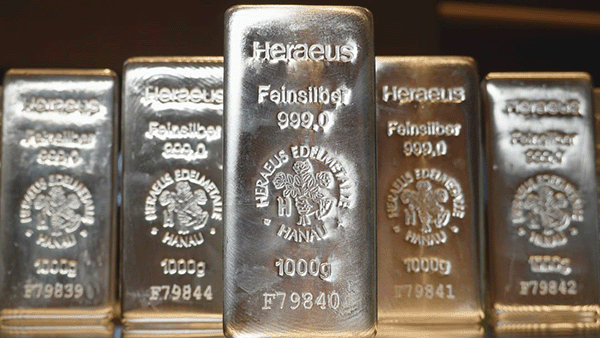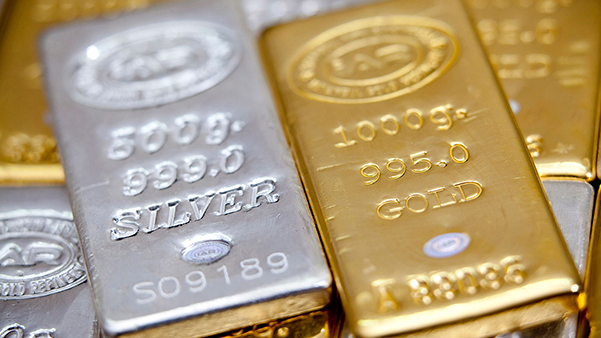Unveiling the Shining Secret: Why Investing in Silver is the Golden Opportunity You Can't Ignore

Introduction
Investing in precious metals as physical assets has been a popular choice for investors seeking a safe haven and diversification. Among these precious metals, silver has demonstrated a compelling track record of performance, particularly during financial crises. In this article, we will delve into the historical performance of silver, its resilience during turbulent times, and its promising future outlook. Additionally, we will explore the significance of silver in our everyday lives and highlight compelling reasons to consider silver as an investment.
Silver, along with gold and platinum, belongs to the group of precious metals. These metals are considered precious due to their rarity, high economic value, and various desirable characteristics. Precious metals possess unique physical and chemical properties that make them highly sought after in various industries and as investment assets. They are known for their durability, resistance to corrosion, conductivity, and aesthetic appeal. As rare resources, precious metals have historically held significant value and have been used as a medium of exchange and a store of wealth.
History of Silver
Silver has a rich history as a form of money and government backing. It was widely used as a medium of exchange and as a basis for currency in various civilizations throughout the world. One notable period was during the era of bimetallism, which prevailed in many countries during the 19th and early 20th centuries. Under bimetallism, both gold and silver were recognized as legal tender, and their values were fixed relative to each other.
In the United States, silver played a significant role in the monetary system with the passage of the Coinage Act of 1792. The act established a bimetallic standard where both gold and silver were used to back the currency. The U.S. dollar was defined in terms of silver and gold, and silver coins, such as the Morgan Silver Dollar and the Peace Dollar, were widely circulated.
However, the use of silver as money and government backing gradually declined in the 20th century. In the United States, the Coinage Act of 1873, also known as the "Crime of '73," demonetized silver and placed the country on the gold standard. The abandonment of silver backing by governments accelerated with the shift towards fiat currencies, where the value of money is not linked to a physical commodity like silver or gold.
The United States officially ended the silver backing of its currency in 1968 when the Treasury Department halted the redemption of silver certificates for silver bullion. Since then, silver has primarily been used as a commodity and investment asset rather than as a form of government-backed money.
Silver has played a significant role in the history of currency. Many currency names, like dollar, peso, sterling, rupee, and yuan, have origins in silver. For example, the dollar derives from the German "Thaler," a silver coin used in Europe. Similarly, the peso is rooted in the Spanish silver dollar, while the rupee's name comes from the Sanskrit "rupya," meaning "wrought silver." Even words for money in certain languages, such as kesef in Hebrew and argent in English, have silver origins. Silver's enduring value and prominence have left a lasting mark on monetary systems and linguistic expressions related to money.
Past Performance of Silver
Silver has long been valued for its intrinsic worth and utility, making it an attractive investment option. Throughout history, silver has displayed impressive price appreciation. Over the past decades, silver investments have outperformed many other traditional investment assets, including mining stocks and bonds. The metal's scarcity, combined with increasing industrial demand and limited mine supply, has contributed to its price growth.
Safe Haven Investment
During the 2008 financial crisis, silver demonstrated its resilience as a safe haven asset. While stock markets plummeted and traditional investments suffered, silver experienced a substantial increase in past performance and value. Investors sought the stability and value preservation offered by precious metals like silver.
Inflation Hedge
Silver has often acted as a hedge during times of rising inflation and market fluctuations, preserving wealth during times of rising prices. When inflation erodes the purchasing power of fiat currencies, silver's intrinsic value and scarcity can help protect investors from the erosion of their wealth.
Inelasticity
Silver exhibits inelasticity in the economic context due to several factors. Firstly, its unique properties and limited substitutes in various industries make the demand for silver less responsive to price changes. Secondly, its significant industrial usage, particularly in electronics and medical equipment, necessitates a consistent supply regardless of price fluctuations. Additionally, silver serves as an investment and a store of value, leading to stable demand as investors view it as a hedge against inflation. While external factors can still impact silver's demand and supply, its distinctive qualities and diversified demand contribute to its overall inelastic nature.
Industrial Demand And Crisis Resilience
Silver's unique position as both a precious metal and an industrial metal contributes to its crisis resilience. During economic downturns, silver's industrial demand tends to decrease, but its safe-haven appeal typically offsets this decline, helping support its price.
Silver Squeeze And Reddit-Driven Market Activity
In recent years, silver experienced a surge in interest driven by social media and online communities. In early 2021, there was a movement known as the "Silver Squeeze," inspired by the success of the GameStop stock rally. While the impact of these events on the silver market was short-lived, they underscored the metal's enduring appeal and the potential influence of retail investors.
Silver's Performance During Financial Crises
Silver has proven its resilience during times of economic turmoil and financial crises. When markets experience significant volatility, investors often flock to precious metals as a safe haven. Silver, in particular, has been sought after due to its affordability compared to gold. During times of uncertainty, silver has demonstrated the ability to preserve value and act as a hedge against inflation, currency devaluation, and stock market downturns.
Why Invest in Silver?

Silver is renowned for its exceptional conductivity, making it the best conductor for both heat and electricity among all known elements and therefore widely used in applications that require efficient electrical wiring, circuitry, and thermal conduction.
Technology
One of the primary applications of silver lies in the realm of technology. Its exceptional electrical conductivity makes it an integral component in electronics manufacturing. From smartphones to laptops, silver is utilized in circuit boards, connectors, and switches to ensure efficient and reliable performance. In addition, silver's reflective properties are crucial for producing high-quality mirrors, optical instruments, and specialized coatings in industries ranging from automotive to aerospace.
Solar Energy
Furthermore, the solar energy sector relies on silver to capture and convert sunlight into usable electricity, making it an essential ingredient in photovoltaic cells used in solar panels. As the world continues its transition towards sustainable energy sources, the demand for silver in this field is expected to grow significantly.
Healthcare
The importance of silver extends to the healthcare industry as well. Silver's antimicrobial properties make it an effective tool in combating infections and promoting healing. It is commonly used in wound dressings, bandages, and medical devices to prevent the growth of bacteria and protect against contamination. Silver-coated catheters and implants are employed to reduce the risk of infections in hospitals. Moreover, silver nanoparticles have shown promise in areas such as drug delivery and diagnostics, opening new avenues for advanced medical treatments. With its ability to combat harmful pathogens, silver continues to play a crucial role in maintaining public health and advancing medical science.
Silver vs Gold

When it comes to investing in precious metals, the debate between physical silver and gold often arises. Both metals have their unique qualities and advantages, making the choice a matter of personal preference and financial goals. In order to compare the two precious metals, we first need to have a look at the gold-silver ratio.
Put short, the gold-silver ratio is a measure that indicates how many ounces of silver are required to purchase one ounce of gold. It is calculated by dividing the current price of gold per ounce by the current price of silver per ounce. For example, if gold is priced at $1,500 per ounce and silver is priced at $15 per ounce, the gold-silver ratio would be 100 (1,500/15 = 100).
The gold-silver ratio is often used by investors and traders to assess the relative value of gold and silver and make decisions about their investment strategies
The Undervaluation of Silver Relative to Gold
According to CPM Group’s 2023 Gold and Silver Yearbooks, the identifiable worldwide above-ground gold and silver reserves were 190,000 metric tons and 1.85 million metric tons respectively.
These staggering figures reveal a startling ratio of 9.7 silver ounces in reserve for every gold ounce. As of May 29, 2023, the value of a single gold ounce is equivalent to an astonishing 83.2 silver ounces. This stark contrast is a far cry from the historical ratio of 16 ounces of silver to one ounce of gold. The current situation suggests that silver is significantly undervalued in comparison to gold, creating a potential opportunity for savvy investors to seize.
In addition to silver being undervalued, experts in silver research estimate that approximately 90% of all mined silver has been lost to landfills, leaving only about 2 billion troy ounces of silver in bullion form, representing just over 4% of all time mined silver. This significant loss occurs as products reach their end-of-life, resulting in a substantial reduction in silver supply each year. The disposal of electronic waste including IPads, Galaxy Tabs, notebooks, PCs smartphones, etc., which contains billions of dollars' worth of silver, exacerbates this issue. Effective recycling and "urban mining" could help recover these valuable resources and mitigate the decline in global silver reserves.
Affordability And Accessibility
Silver holds a distinct advantage over gold in terms of affordability. With a lower price point, silver investment becomes more accessible to a broader range of investors. This affordability is especially beneficial for those who have limited funds or wish to diversify their precious metal holdings without committing a significant amount of capital.
Industrial Demand
Gold and silver, both classified as precious metals, have distinct usage patterns. Gold is primarily used for jewelry and investments, with only 12% allocated for industrial applications. In contrast, silver is primarily utilized in industrial sectors, including electronics, solar panels, and other industrial uses. This distinction positions silver as a hybrid metal, influenced by both precious metal and industrial market dynamics. Historically, silver has outperformed gold during robust economic expansions, driven by industrial growth, while underperforming during periods of economic stress.
Potential For Higher Returns
While silver prices may exhibit greater volatility compared to gold, it also offers the potential for higher percentage returns. Under certain market conditions, silver prices can experience significant upward movements, making it an enticing option for investors seeking capital appreciation. This higher volatility can bring increased risks but also the possibility of greater rewards and has resulted in silver outperforming gold on multiple occasions.
The Silver Surge of the Late 1970s
One standout period showcasing silver's ability to outshine gold was the late 1970s. During this time, the Hunt Brothers embarked on a bold endeavor to corner the silver market, catapulting prices to record highs. Silver's rally was unprecedented, with its value surging from around $6 per ounce to nearly $50 per ounce in a short span. Gold, while also experiencing gains, failed to match the remarkable performance of its silver counterpart.
Glittering Gains in the 1990s
The 1990s witnessed several instances when silver displayed its potential for higher returns. Increased industrial demand coupled with decreased supply propelled silver prices upward. Between 1993 and 1995, silver more than doubled in value, while gold's price experienced a relatively modest increase. This period showcased silver's ability to outperform gold as a promising investment option.
Post-Global Crisis: Silver's Resilience
In the aftermath of the 2008 global financial crisis, both gold and silver attracted investors seeking refuge from economic uncertainties. However, it was silver that stole the limelight in terms of performance. From the end of 2008 to 2011, silver prices soared to approximately $48 per ounce, outpacing gold's climb to around $1,900 per ounce. This notable period highlighted silver's potential for higher returns in times of market turmoil.
Precious Metals in the COVID-19 Crisis
The onset of the COVID-19 pandemic in early 2020 also shook global financial markets, leaving them reeling with uncertainty and volatility.
Silver, a key player in the commodity market, initially mirrored the market sell-off in March, as investors sought to safeguard their capital. However, as governments and central banks launched unprecedented stimulus measures to counter the economic fallout, silver embarked on a recovery path. The metal's price surged by around 55% during this period, soaring from roughly $14 per ounce to about $27 per ounce by the end of August. This substantial increase was primarily driven by intensified safe-haven demand, concerns over inflation, and a weakened U.S. dollar. Additionally, the burgeoning industrial demand for silver, particularly in the solar panel and electronics industries, further supported its price gains.
In parallel, gold also experienced significant appreciation as investors sought stability and a store of value. From March to August 2020, the metal surged by approximately 30%, climbing from around $1,600 per ounce to roughly $2,100 per ounce. Gold's impressive rally was fueled by similar factors that drove silver's ascent, including heightened safe-haven demand, concerns over inflationary pressures, and the low-interest-rate environment. Moreover, central bank purchases and investment inflows into gold-backed exchange-traded funds (ETFs) contributed to its positive performance.
The Future Outlook for Silver
The future outlook for silver appears bright, supported by several key factors. The rapid advancement of technology and the growing demand for renewable energy sources are driving increased industrial use of silver in sectors such as electronics, solar panels, and batteries. Furthermore, as governments worldwide prioritize sustainability and renewable energy, silver's exceptional conductivity and its use in photovoltaic cells make it an essential component in powering the clean energy revolution.
The global push for green energy and electric vehicles is likely to create sustained demand for silver. As the world transitions to a more sustainable future, silver's importance in various industries is expected to rise, potentially leading to a supply deficit and the silver price will appreciate.
The Significance of Silver in our everyday Lives
Silver plays a crucial role in our daily lives beyond its investment potential. Its remarkable properties make it indispensable in various industries. Silver is widely used in electronics and electrical equipment, including smartphones, computers, and appliances, due to its exceptional thermal and electrical conductivity. It is also an essential component in the medical field, used in wound dressings, surgical instruments, and antibacterial coatings.
Moreover, silver is extensively employed in the production of solar panels, as it helps capture and store solar energy efficiently. The metal's reflective qualities make it vital in mirrors, optics, and photography. Silver is even used in water purification systems and in the production of coins and jewelry.
Conclusion
Although people have different types of investment objectives, investing in silver can be a prudent decision and should be included in one's portfolio, considering its resilience during financial crises, undervaluation relative to gold, and promising sustainable future outlook. With its diverse range of industrial applications and the increasing demand for renewable energy sources, it is definitely the right time to buy silver. If it's investing in physical silver, either silver bullion bars or coins, silver is poised to play an even more significant role in the coming years and decades.